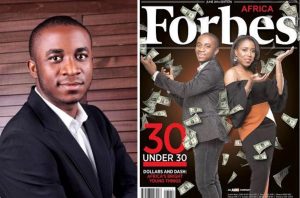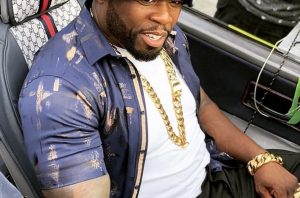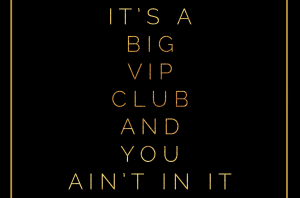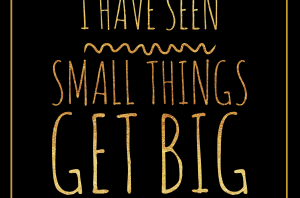
Let’s be honest: most startups don’t make any revenue, let alone profit. That seems ridiculous to me. But that’s why I love Casper, a mattress startup based out of New York.
Launched in 2014, Casper did an astounding $1 million in revenue in their first 28 days of business, making a profit on the first day. Described as “Warby Parker for mattresses,” Casper conveniently packs their mattresses in a small box and ships them directly to customers, giving them 100 days to commit to the purchase.
And so far it’s working. Since launching two years ago, Casper has done over $100 million in revenue and raised $70 million in funding.
So how did five guys who knew nothing about selling mattresses end up with an award-winning product, $70 million in funding, and $30 million in their first year of sales?
Brand Analysis
“Disrupt” is very often a word thrown around in discussions of new brands and startups with promise and potential. The really provocative ideas—the ones poised for big things—will shake up the status quo of an entire industry, shed new light on an overlooked subject, and make consumers see with unjaded eyes, or so the myth goes.
Let’s consider an industry that poses an inherent challenge to consumers: mattresses! Phew, not a particularly frequent, nor inspiring, purchase, we know. A mattress is a fact-of-life purchase, one you dryly research, seek out a few recommendations or reviews on, and then never think of much again. This reality makes the task of creating a successful, memorable brand while also engaging the market successfully pretty interesting.
The world of mattresses was quite sleepy for a long time—think strip-mall Sealy’s and Sleepy’s outlets, unappealing, hulking things with ornate designs and a satin finish tied to moving vans. Hardly the stuff of innovative dreams.
Enter: Casper, an online-only, New York City-based startup that launched in 2013 with branding, media, and millennial savvy in spades, plus a spate of impressive—and also interesting—market successes and brand initiatives under its belt.
As much as the word “disrupt” can be overused, in the case of Casper, it fits the bill. We take a closer look at how the millennial mattress maker and their unique brand identity took the sleep industry by storm, and landed in the bedrooms of shoppers everywhere while they were at it.
“Obsessively engineered…”
“Our award-winning mattress is so perfect we only make one.”
“We created Casper because better sleep makes for better living.”
The sleekly minimalist, Apple gen-approved design of the mattress itself, as well as the purchasing and delivery models, and brand language of Casper all ask their shoppers to forget everything they think they know about buying a mattress.
This is, no doubt, a good thing—a breath of fresh air.
From the outset, Casper proffers a more modern perspective on sleep: that a restful slumber pays off in dividends for our daily lives, that with a stellar night’s sleep, we can do more during our days. That’s strategic aspirational messaging to a T. Then, Casper respond to a handful of problems: over-saturation of the market with similar, hard-to-decide-between options, high price points, inconvenient shopping models, and cumbersome design that simply doesn’t fit within the confines of many young people’s lives.
Casper positions itself as the modern day mattress solution we didn’t know we’d been looking for all this time.
Market studies suggest that today’s new generation of consumers is less wooed by brands themselves than they are by the ideas surrounding the brand. And so, Casper smartly positioned itself as a lifestyle brand.
Once upon a time, mattress purchases took place in poorly lit showrooms. As an online-only company without any brick and mortar shops, Casper’s business relies on e-commerce. However, they also recognized the importance of establishing a concrete presence in people’s lives. In November 2015, nestled between luxury boutiques on Venice Beach’s uber trendy Abbot Kinney Boulevard, Casper opened a pop-up shop where you could make a “nap appointment” and test out the merchandise. Similar pop-up experiences are planned for cities like San Francisco, Austin, and Washington, D.C.
They also engage with the media landscape in a way that feels cheeky and informed. A Casper-created website, Late Night Snap Hacks, advises users on how they can Snapchat from the comfort of their cozy beds while making their friends think they’re at a cool party.
Casper also launched an independent, long-form web publication called Van Winkle’s devoted to the science and study of all things sleep, positioning themselves as the thought leaders in the sleep space.
By expanding the concept of sleep far beyond quotidian necessity and into a space informed by possibility, curiosity, and discovery, Casper breathes new life into the foundations of the sleep industry.
“Our brand gets people to ask those more philosophical questions about how sleep impacts their life. ‘What if I slept 10 percent better?’” Poses Casper Co-Founder and COO Neil Parikh. “Think about how much more creative you would be, how much smarter you might be, how better your memory would be, how big a personality you would be. We make products that help them attain that aspirational life.”
The Strategy
“Our industry has seen so little innovation for decades. The more places we can tell our story the better,” shared Phillip Krim, Casper co-founder and CEO. With ad campaigns wallpapering New York City and San Francisco-area subway stations and taxi tops, the initial goal was simply spreading the word.
While countless new businesses use online advertising via Facebook or Instagram ads, Casper inserted their brand directly into the urban landscapes that they were hoping to reach. Suddenly, and quite appropriately, a Casper ad might appear on a taxi cab parked in front of a Bed Bath & Beyond.
Then, in order to develop and clearly express their unique brand, Casper worked alongside design outfit Red Antler to create a cohesive (and thus instantly memorable) visual identity that is wholly modern and a touch cheeky, and evoked convenience and ease. Their ad campaigns, seen on billboards, subway platforms, and television, all strike a consistently friendly and inclusive tone. They position Casper as the one-size-fits-all dream mattress everyone wants and never knew they needed. This tone spans the entirety of their strategy—creating an incredibly consistent and distinctive visual identity and brand language that is unmistakably their own.
No wonder Casper is the go-to for a new generation of brand-savvy shoppers and sleepers.
By blog lingo app, The Hustle Co.
Click here to start living your dream





